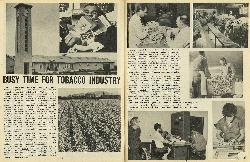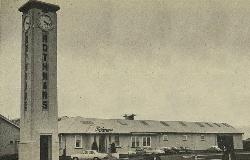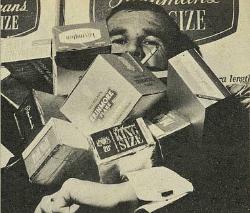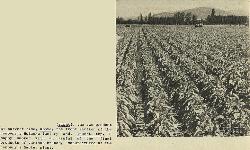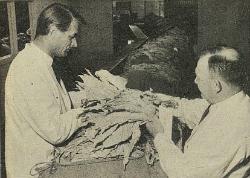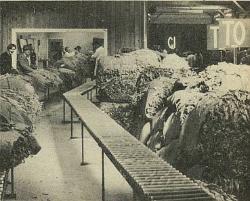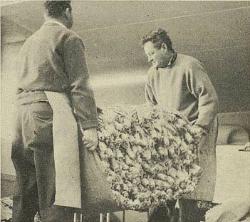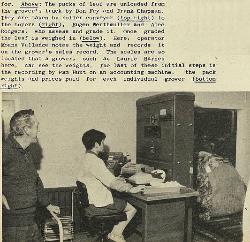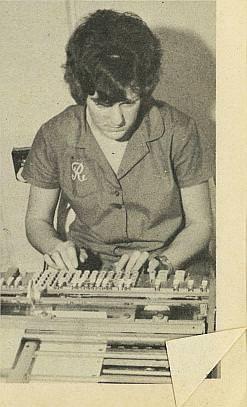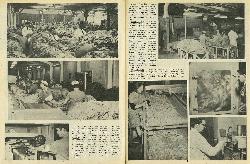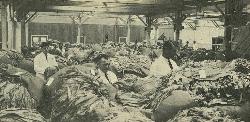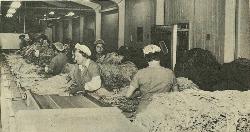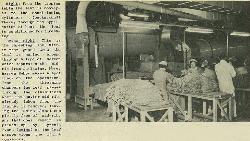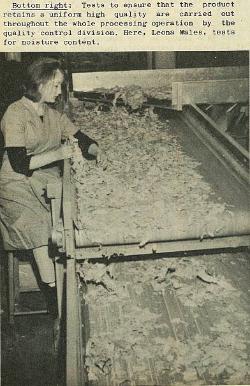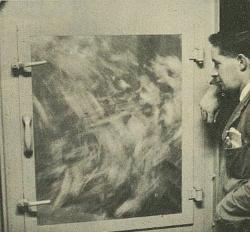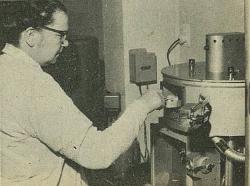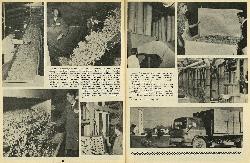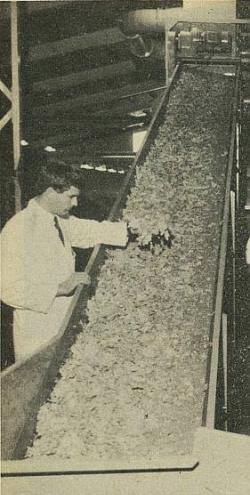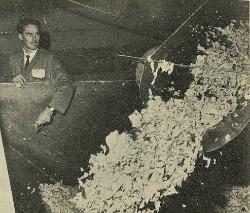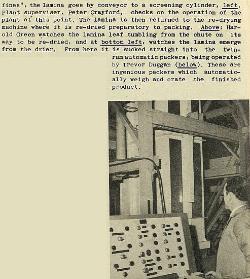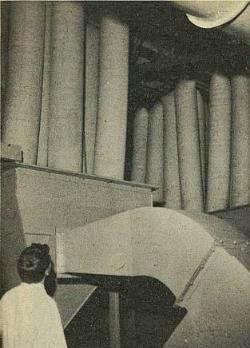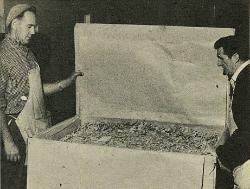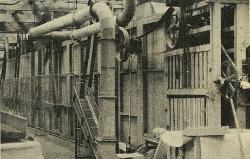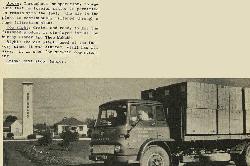20
Busy Time For Tobacco Industry
The tobacco harvest has long since been picked, dried and graded on the farms. Now, growers throughout the Nelson-Golden Bay districts take their produce, so to speak, to the market. The "market place" we visited recently, was the Motueka factory of Rothmans, where for 3½ months at this time of the year the 23 permanent and 52 casual staff are very busy people. They stay busy, day in and day out, for in this comparatively short period the factory processes about 4.3 million lbs of tobacco leaf. This is made possible by the introduction in 1968 of a completely new plant, as modern at that time as any to be found in the world. The new plant was installed to keep pace with the increased purchases of New Zealand leaf by the company. In 1957 when the company began operations in New Zealand, about 500,000 lb of leaf was bought. In the 1967-68 season, 4.6 million lbs of leaf was bought. The new plant more than doubles the capacity of the old plant.
Originally the processing of leaf at Motueka involved the re-drying and conditioning of tied "hands" of leaf, and the manual packing of this leaf into cases for storage. With the new plant, which we will show in this picture story, the entire process is completely automatic.
On this page we show, (right), the raw product at harvest time, above, the front section of the company's Motueka factory and, insert top, a happy smoker with an armful of the final products of various brands, manufactured at the company's Napier plant.
21
The new plant has a maximum output of 8000 lbs of leaf an hour. The leaf is vacuum cleaned in a specially designed pneumatic system, sieved over vibratory conveyors and finally re-cleaned to remove any particle of sand or dust that may have escaped the preliminary cleaning processes. The plant was manufactured in England, Scotland and, in the case of the automatic hydraulically-operated twin-ram packers, the United "States. The plant was assembled by the company's own staff. Quite a large number of components were manufactured in Motueka.
On this page we trace the initial steps taken by the dried leaf from the time it reaches the factory to the time it is graded and accounted for. Above: The packs of leaf are unloaded from the grower's truck by Don Fry and Frank Chapman. They are taken by roller conveyor (top right) to the buyers (right), Eugen Werthmuller and Alec Rodgers, who assess and grade it. Once graded the leaf is weighed in (below). Here, operator Moana Vallance notes the weight and records it on the grower's sales record. The scales are so located that a grower, such as Laurie Barnes here, can see the weights. The last of these initial steps is the recording by Pam Hunt on an accounting machine, the pack weights and prices paid for each individual grower (bottom right).
22
After being graded and weighed, the packs of leaf are taken to the holding floor and stored, according to their grade, in readiness for processing (top). From the grading floor the leaf is taken to the tipping table (above). Here the staff spreads the leaf on an endless conveyor so that the tips of the leaf are cut off. Because of the very small percentage of mid-rib at the tip, this section of the leaf does not have to be processed through the threshing line. At left, Lex Corbett cleans the cutting edge of the tipping knives. The small tips pass along a smaller separate conveyor, and are not threshed.
23
From the tipping table the leaf is conveyed to the conditioning cylinders (background) where, through the application of heat the leaf is conditioned for threshing.
This is the threshing line. Within that glass area the leaf is hurled around through a type of screen which separates the midrib from the lamina. Here, Warren Webby makes a spot check on the operation. From the threshing chambers the leaf passes through the classifiers where the heavier mid-rib, already taken from the lamina, is removed, leaving the lamina almost completely free of mid-rib. Any that does remain is picked up by Cynthia Evans (below) as the leaf passes along the lamina conveyors.
Tests to ensure that the product retains a uniform high quality are carried out throughout the whole processing operation by the quality control division. Here, Leona Wales, tests for moisture content.
24
In the processing of the leaf, it is inevitable that minute pieces of leaf are mixed with the lamina. To remove these "lamina fines", the lamina goes by conveyor to a screening cylinder, left. Plant superviser, Peter Crayford, checks on the operation of the plant at this point. The lamina is then returned to the re-drying machine where it is re-dried preparatory to packing. Above: Harold Green watches the lamina leaf tumbling from the chute on its way to be re-dried, and at bottom left, watches the lamina emerge from the drier. From here it is sucked straight into the twin-ram automatic packers, being operated by Trevor Duggan (below). These are ingenious packers which automatically weigh and crate the finished product.
25
Throughout the operation, to ensure that no foreign matter is permitted to remain with the leaf, the air in the plant is continuously filtered through a huge filtration plant.
Crated and ready to go, the finished product is displayed for us by Murray Fisher and Theo McNabb.
The old plant, used at the factory since it was started, still has its uses. It is used for mid-rib conditioning.
Next stop, Napier.


